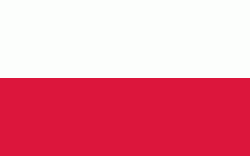Jastrzębie-Zdrój
 |
 |
The first written documentation, relating to this area, date back to around 1305 (Liber fundationis episcopatus Vratislaviensis). Administratively, the town is made up of several old settlements, whose origins go back to the distant past. The original name of the town was Jastrzemb. The origin of the name, which means 'hawk' in Polish, is connected with the legend of the black knight. From the 16th century to the beginning of the 19th century, it was part of the administration of Wodzisław. Between 1858 and 1860, trial excavations of hard coal were performed all over the area of Jastrzębie Dolne. These excavations ended up discovering springs containing iodine and bromine brine solutions. In 1860, the count of Königsdorff acquired the lands and suggested the construction of bath facilities. Thus, in 1862, the health resort of Bad Königsdorff-Jastrzemb was brought into life. Shortly after, the town joined the exclusive circle of the most prestigious health resorts in Europe.
In 1895, the natural health centre was taken over by a Polish doctor, Mikołaj Witczak, who lent great service to the development of health-resort in Bad Königsdorff-Jastrzemb. His managerial skills together with wise investment made Jastrzębie-Zdrój a highly appreciated and fashionable health resort inside the German Empire and the interbellum Poland. Consequently, numerous health facilities were then set up.
The history of Jastrzębie-Zdrój as a health resort came to its end in the 1960s, when all over the area began the intensive exploitation of coking coal deposits. Within a period of 12 years, five coal mines were set up. Between 1954–1975, Jastrzębie was part of the Wodzisław County. During the time of political transformation in Poland, Jastrzębie-Zdrój went down the annals of Polish modern history as the place where the so-called "the Jastrzębskie Agreement" was concluded. The signing of the protocol initiated the process of political, economic and social changes in Poland.
Map - Jastrzębie-Zdrój
Map
Country - Poland
 |
 |
| Flag of Poland | |
Poland has a temperate transitional climate and its territory traverses the Central European Plain, extending from Baltic Sea in the north to Sudeten and Carpathian Mountains in the south. The longest Polish river is the Vistula, and Poland's highest point is Mount Rysy, situated in the Tatra mountain range of the Carpathians. The country is bordered by Lithuania and Russia to the northeast, Belarus and Ukraine to the east, Slovakia and the Czech Republic to the south, and Germany to the west. It also shares maritime boundaries with Denmark and Sweden.
Currency / Language
| ISO | Currency | Symbol | Significant figures |
|---|---|---|---|
| PLN | Polish złoty | zÅ‚ | 2 |
| ISO | Language |
|---|---|
| PL | Polish language |
















